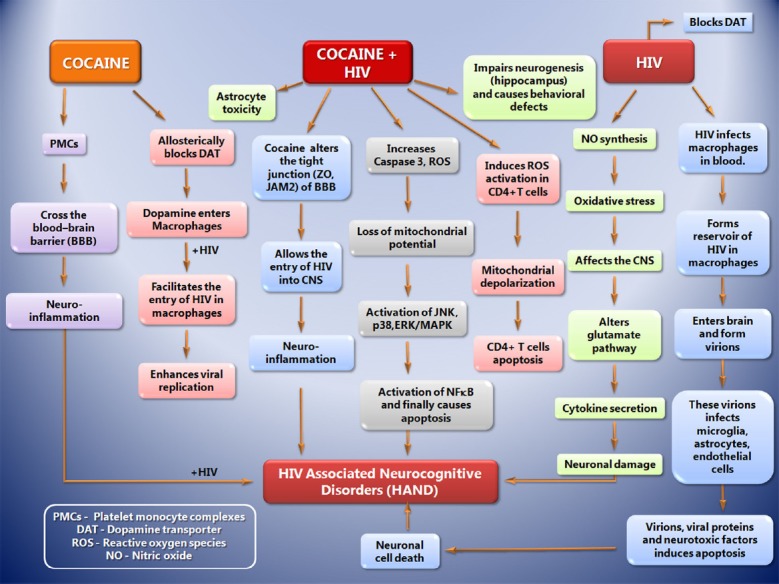FIGURE 2.

The sequence of events that leads to progression toward HIV associated Neurocognitive Disorders (HAND) during cocaine abuse, cocaine + HIV infection and HIV infection alone. Drug abuse (Cocaine) leads to the formation of platelet monocyte complexes (PMCs) which crosses transendothelial barrier and cause neuroinflammation, which possibly results in HAND. Along with the PMCs formation, cocaine also induces neuronal apoptosis by triggering viral products such as Tat and gp120, and potentiates astrocyte toxicity after activation by HIV gp120. gp120 is necessary for the viral infectivity, enhances neurotoxicity via inducible nitric oxide synthesis, and causes cellular oxidative stress which increasingly affects the CNS. It also alters the host glutamate pathway signaling, which interacts with cellular receptor, directing secretion of cytokines and finally affecting the neurons. Cocaine along with gp120 synergistically increases neuronal toxicity by the increase in the activity of caspase-3, increase in reactive oxygen species and loss of mitochondrial potential. Cocaine and gp120 are capable of eliciting signaling transduction pathways in neurons, involving mitochondrial membrane potential loss, oxidative stress, activation of JNK, p38, and ERK/MAPK pathways, and results in downstream activation of NF-κB that leads to HAND.
